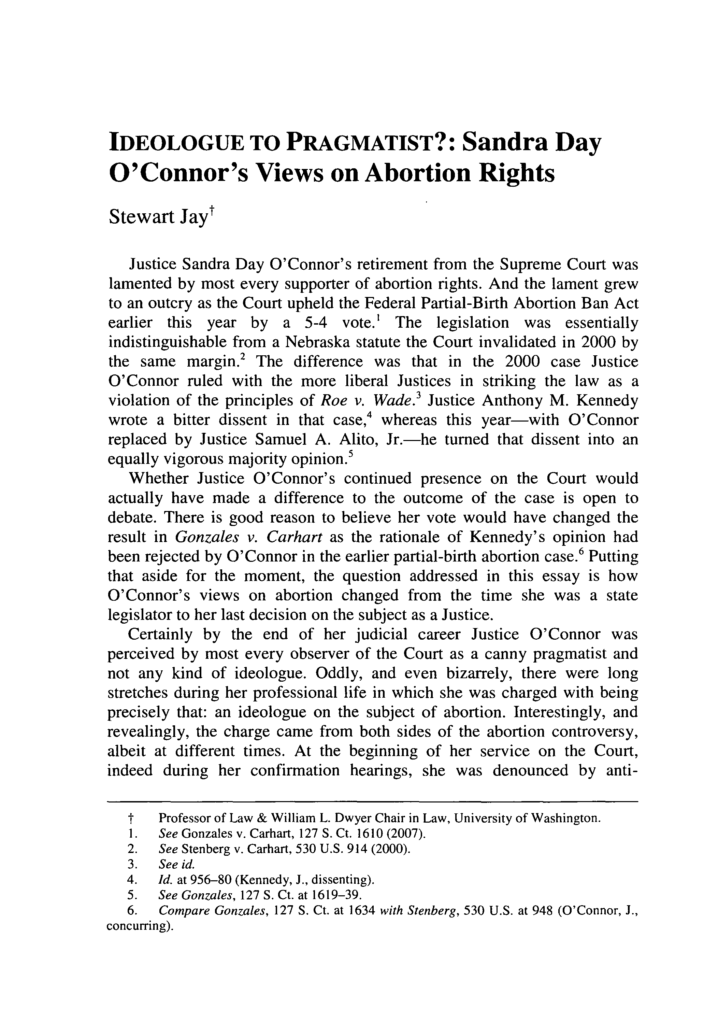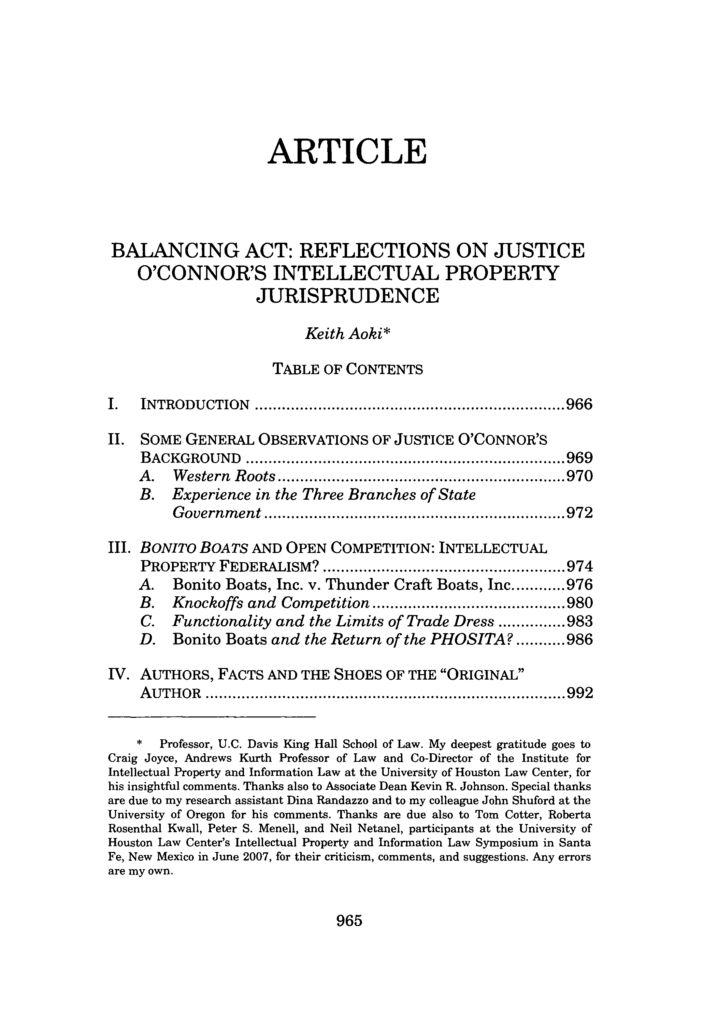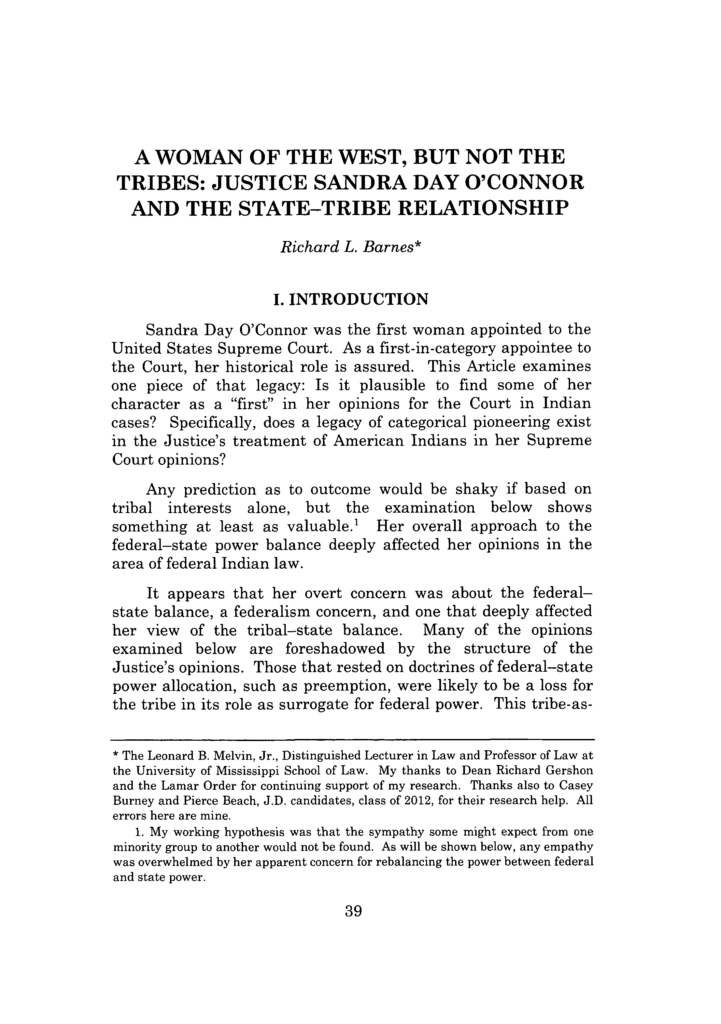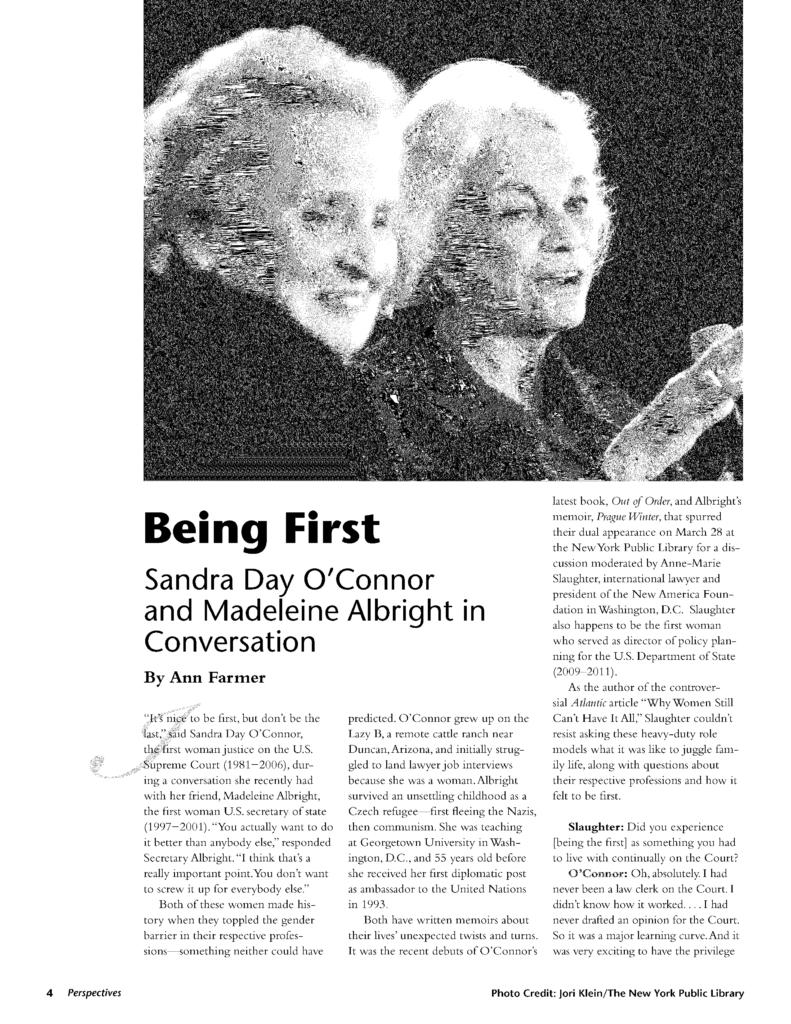Ideologue or Pragmatist: Sandra Day O’Connor’s Views on Abortion Rights
IDEOLOGUE TO PRAGMATIST?: Sandra Day
O’Connor’s Views on Abortion Rights
Stewart Jay
Justice Sandra Day O’Connor’s retirement from the Supreme Court was lamented by most every supporter of abortion rights. And the lament grew to an outcry as the Court upheld the Federal Partial-Birth Abortion Ban Act earlier this year by a 5-4 vote.1 The legislation was essentially indistinguishable from a Nebraska statute the Court invalidated in 2000 by the same margin. 2 The difference was that in the 2000 case Justice O’Connor ruled with the more liberal Justices in striking the law as a violation of the principles of Roe v. Wade.3 Justice Anthony M. Kennedy wrote a bitter dissent in that case,4 whereas this year-with O’Connor replaced by Justice Samuel A. Alito, Jr.-he turned that dissent into an equally vigorous majority opinion.5
Whether Justice O’Connor’s continued presence on the Court would actually have made a difference to the outcome of the case is open to debate. There is good reason to believe her vote would have changed the result in Gonzales v. Carhart as the rationale of Kennedy’s opinion had been rejected by O’Connor in the earlier partial-birth abortion case.6 Putting that aside for the moment, the question addressed in this essay is how O’Connor’s views on abortion changed from the time she was a state legislator to her last decision on the subject as a Justice.
Certainly by the end of her judicial career Justice O’Connor was perceived by most every observer of the







